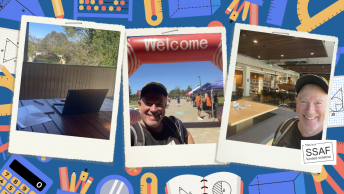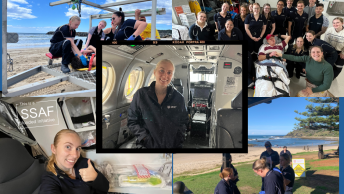This post is over three years old, the information may be outdated.
If you’re an undergraduate student embarking on your first degree and applying for your first part-time job, this one’s for you.
Meet Charlie. Charlie is studying an undergraduate course at Charles Sturt University. He has relocated to live on campus. Charlie is just like you – he is looking for a job that will benefit him in two ways: an income to navigate adult life as well as experience in the field he is studying. Charlie has great intentions, however, what Charlie does not have is a golden ticket to a job interview. This is better known as a resume or CV.
Charlie is using the resources available at the Charles Sturt Careers and Skills Hub to build his resume and better his chances of securing a job. Of course, you too can get career ready by accessing the Careers and Skills Hub via the Student Portal. But just for his fellow students, Charlie has recapped some of the amazing tips and tricks he learnt about building his resume via the Careers and Skills Hub.
Plan it
Just like an essay, it’s important to gather all the relevant information before beginning the writing process. Consider your:
- work experience
- education and qualifications
- strengths, skills and glory moments.
In the Charles Sturt Careers Portal, Alex Davis, the Head of Finance at Flight Centre, advises students to focus on the big picture.
“You want to be able to look at a CV and get a picture of what that person’s qualifications, what their experience, and what their skills are without going into too much detail. You don’t really want to wade through lots of detail cause that’s what the interview is about.”
Write it
No one can deny that everyone’s resume will be different. But generally, these are some things you should remember when considering a style and structure that will capture a recruiter’s attention:
- Get the facts down. For example, your title, name, age and location.
- If you are just starting out, prioritise your education against your work experience.
- Your personal profile should be no more than five lines. This section is an often-missed opportunity to humanise your resume. So, convey your passions in a way that is both authentic and meaningful.
- Do not use the archaic term, “References available upon request”.
Check it
Recruiters spend on average, six seconds vetting a resume. The last thing you want is for them to spot a spelling mistake. So, ensure you use either a checking system, a friend or these tips before forwarding off your resume:
- File your resume as a simple word document.
- If it’s over two pages, it needs to be cut down.
- Section headings are an effective way of evening out the ratio of white space to text.
- These days, there is an increased chance your resume will go through an Applicant Tracking System (ATP). Try not to use tables, text boxes, pictures and graphs as they may disturb the readability of your resume to an ATP.
Change it up
In the Charles Sturt Careers Portal, Peter Panayotou, a CV Coach at The Write Stuff says, “The important thing is to try and tailor it to the industry you’re going into. So, for example, if you were going to go into law, you’d probably need to be quite detail-oriented and analytical. If you were going to go into engineering, you might need to be a good problem solver.”
So yes, your resume will be something you will constantly have to alter to suit the position you are applying for.
One last tip Charlie wants to stress to his fellow students is that honesty is the key to success. Your resume is one component of your personal brand and recruiters will naturally cross check it with your online profile.
For more info and tips, register for a free workshop and check out the free CV builder.










